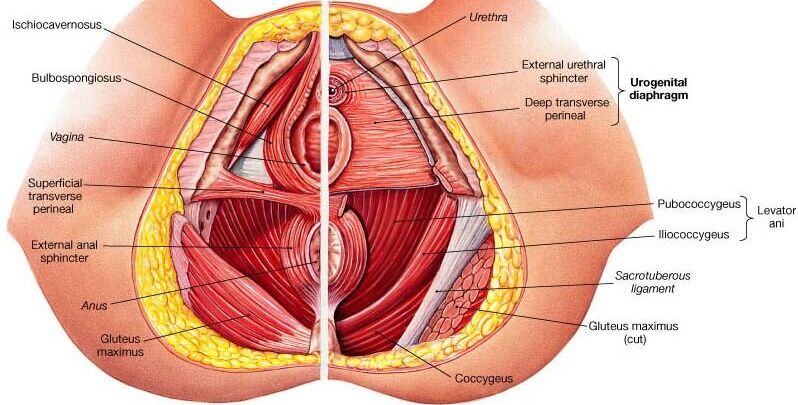
How to Do Kegel Exercises Correctly: A Step-by-Step Guide
Kegel exercises, renowned for their effectiveness in strengthening pelvic floor muscles, have become a cornerstone in promoting both men’s and women’s health. These exercises offer a plethora of benefits, from enhancing bladder control to elevating sexual function.

Kegel exercises, named after Dr. Arnold Kegel, are a form of pelvic floor muscle exercises designed to strengthen the pelvic floor muscles. These muscles play a crucial role in supporting your pelvic organs, including the bladder, uterus, small intestine, and rectum. Kegel exercises involve the contraction and relaxation of these muscles, helping to improve their strength and endurance.
To perform Kegel exercises effectively, you need to locate and engage the pelvic floor muscles:
1. Stop the Flow Method: While urinating, try to stop the flow of urine midstream. The muscles you engage to achieve this are your pelvic floor muscles. However, don’t make a habit of doing Kegels during urination, as it can lead to incomplete emptying of the bladder.
2. Anus Contraction: Another way to identify the muscles is to tighten the muscles around your anus as if you’re trying to prevent gas from escaping.
 Common Questions and Concerns About Kegel Exercises:
Common Questions and Concerns About Kegel Exercises:
1. Are Kegel exercises only for women?
– No, these exercises are beneficial for both men and women. Men can use them to improve bladder control, support sexual function, and address issues like erectile dysfunction or premature ejaculation.
2. How often should I do Kegel exercises?
– For beginners, start with 3 sets of 10 repetitions a day and gradually increase as your muscles get stronger. The frequency can vary depending on your goals and needs.
3. How long does it take to see results?
– Results can vary from person to person. Some may notice improvements in a few weeks, while others might take a few months. Consistency is key.
4. Can Kegel exercises improve sexual function?
– Yes, strong pelvic floor muscles can enhance sexual function by improving vaginal tightness and increasing sexual satisfaction for both men and women.
5. Can Kegel exercises help with incontinence?
– Yes, one of the primary benefits of these exercises is improved bladder control. They can be highly effective in addressing stress incontinence and overactive bladder.

 Health Benefits of Kegel Exercises:
Health Benefits of Kegel Exercises:
1. Improved Bladder Control: These exercises can help reduce urinary incontinence, making it easier to control your bladder, especially when laughing, coughing, or sneezing.
2. Enhanced Sexual Function: For both men and women, stronger pelvic floor muscles can lead to improved sexual performance, increased sexual pleasure, and better orgasm control.
3. Postpartum Recovery: After childbirth, these exercises can aid in the recovery of weakened pelvic floor muscles, helping to restore tone and function.
4. Pelvic Organ Support: These exercises can prevent or alleviate issues like pelvic organ prolapse, where pelvic organs descend into the vaginal canal.
5. Prostate Health (Men): Men can benefit from these exercises by improving prostate health and addressing issues like erectile dysfunction.
 Common mistakes when performing Kegel exercises can hinder progress and effectiveness.
Common mistakes when performing Kegel exercises can hinder progress and effectiveness.
To help people avoid these mistakes, here are some key ones to be aware of:
1. Incorrect Muscle Engagement:
– Mistake: Squeezing the buttocks, thighs, or abdominal muscles instead of the pelvic floor muscles.
– Solution: Focus on contracting only the pelvic floor muscles. To identify the right muscles, try to stop the flow of urine midstream during a trip to the bathroom. Those are the muscles you should engage.
2. Inconsistent or Incorrect Form:
– Mistake: Inconsistent or incorrect form, such as holding the contraction for too long or not fully relaxing between contractions.
– Solution: Follow a structured routine with proper timing. Squeeze the muscles for 3-5 seconds, then relax for the same duration. Repeat this cycle several times.
3. Overdoing It:
– Mistake: Overexerting the pelvic floor muscles by doing too many contractions in a day.
– Solution: Like any exercise, overdoing it can lead to muscle fatigue and discomfort. Start with a few contractions a day and gradually increase the frequency and duration.
4. Breathing Irregularities:
– Mistake: Holding the breath while performing Kegel exercises.
– Solution: Breathe normally during the exercise to ensure that you’re not creating unnecessary tension in other muscles. Inhale as you relax and exhale as you contract the pelvic floor muscles.
 5. Poor Consistency:
5. Poor Consistency:
– Mistake: Inconsistent practice – forgetting or skipping Kegel exercises.
– Solution: Set a schedule or reminders to ensure consistency. Try to make Kegel exercises a part of your daily routine.
6. Improper Body Position:
– Mistake: Performing Kegel exercises in the wrong body positions, such as standing or sitting.
– Solution: It’s often best to start in a comfortable seated or lying position. As you become more proficient, you can practice Kegels in various positions to challenge your muscles.
7. Not Seeking Professional Guidance:
– Mistake: Failing to consult with a healthcare professional when experiencing specific issues like pelvic pain or incontinence.
– Solution: If you have underlying health concerns or are unsure if Kegel exercises are right for you, seek guidance from a healthcare provider or a pelvic floor physical therapist.
8. Expecting Immediate Results:
– Mistake: Expecting immediate improvements in bladder control, sexual function, or other areas.
– Solution: Understand that it may take some time to see noticeable results. Be patient and consistent in your practice.
9. Ignoring Feedback from the Body:
– Mistake: Ignoring discomfort, pain, or unusual sensations during Kegel exercises.
– Solution: If you experience pain or discomfort, stop immediately and consult a healthcare professional. Pain during Kegel exercises is not normal.
10. Lack of Progress Tracking:
– Mistake: Not keeping track of your progress or adjustments in the exercises.
– Solution: Maintain a journal or use a Kegel exercise app to track your progress, making it easier to see improvements or areas that may need more attention.
Remember that while Kegels can offer many benefits, they may not be suitable for everyone. If you have specific concerns or medical conditions related to your pelvic health, it’s essential to consult with a healthcare professional or a pelvic floor physical therapist for tailored advice and guidance.
Disclaimer: The information provided in this content is for general informational purposes only. It is not intended as medical or healthcare advice, diagnosis, or treatment. Always seek the advice of a qualified healthcare professional with any questions you may have regarding a medical condition or healthcare decisions.
















